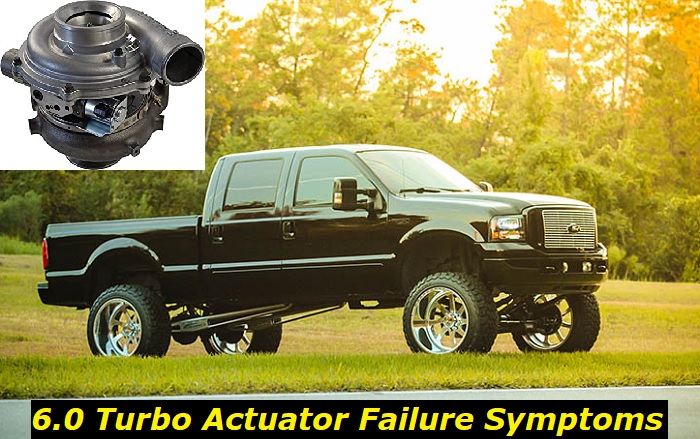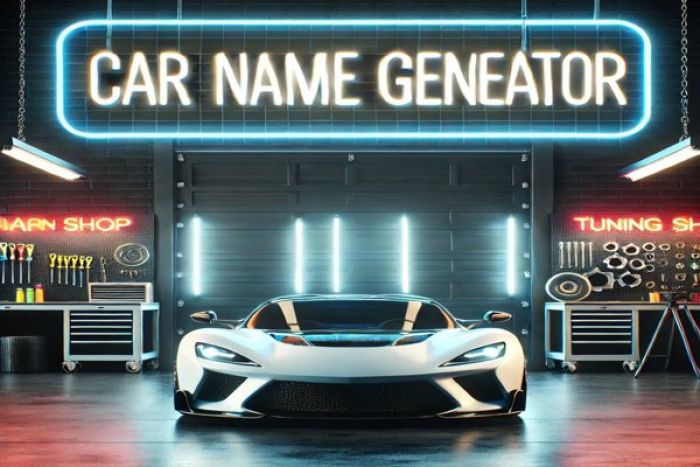The 6.0 Power Stroke marked a major milestone in Ford's long and decorated engine history. The unit came as a replacement for the much-beloved 7.3 Power Stroke due to the stricter emission standards of their time, but the successor certainly didn't disappoint because it featured high power capabilities, better fuel efficiency, and more reliability.
Among the contributors to the enhancements in the overall performance of the 6.0 Power Stroke was the integration of a VGT (variable geometry turbocharger).
Key features and my opinion about the engine
- Production years:2003-2009
- Average lifespan of 6.0L Power Stroke:320,000-350,000 miles
- Fuel supply type:direct injection
- Power range:325 hp
- Fuel efficiency:bad
- Engine block material:cast-iron
- Engine reliability score:low
- The most common problems:EGR cooler and oil cooler problems, fuel pump issues, head gasket problems, oil pump failing.

What is an Actuator?
Let's have a quick rundown of the basics of actuators first. That's to give unfamiliar readers a better understanding of their nature and how they work in vehicles.
In general, an actuator is a type of motor that converts energy into motion. The most common types of actuators in terms of functions are hydraulic and pneumatic. Hydraulic actuators use fluid pressure to generate force, while pneumatic actuators use compressed air. Electric actuators are also becoming increasingly popular due to their high torque and low noise output. Actuators are used in a variety of applications, including automotive, aerospace, and manufacturing.
There are two main types of actuators in accordance with their structure: linear and rotary. Linear actuators convert energy into linear (straight-line) motion, while rotary actuators convert energy into rotational (turning) motion. The Ford 6.0 engine uses a hydraulic setup, which is linear in form.
How Does an Actuator Work in the Ford 6.0 VGT?
An actuator is a device that converts energy into motion. In the context of the Ford 6.0 VGT engine, the actuator is responsible for opening and closing the variable geometry turbocharger (VGT) vanes. This allows the engine to maintain optimal performance by adjusting the airflow through the turbocharger based on demand or prevailing driving conditions.
The actuator is controlled by an electronic control module (ECM) which monitors various engine parameters such as throttle position, exhaust back pressure, and intake manifold pressure. Based on these inputs, the ECM will adjust the position of the actuator arm to open or close the VGT vanes as needed.
While the Ford 6.0 VGT engine is no longer in production, it was a cutting-edge design at the time and helped to set the stage for the modern turbocharged engines that are now commonplace. The VGT system is just one example of the many ways in which actuators are used in today's vehicles to help improve performance and efficiency.
Symptoms of the Common Problems in the 6.0 Turbo Actuator
The VGT actuators surely did their job well in bringing out the optimum potential of the 6.0 Power Stroke but that does not mean it's free from problems. Due to regular wear and tear that's sometimes accelerated by neglect or abuse from users, the actuators can be subject to mechanical and electrical failures.
Such occurrences can manifest through the following symptoms:
1. Power Loss
The most common symptom of a turbo actuator problem is power loss. This will make accelerating such a chore for your auto even if you put your foot harder on the gas, and at times, it will struggle to maintain its momentum at high speeds.
2. Overboost
At the other end of the spectrum, an overboost can also be a red flag because that means your actuator can no longer maintain control over the wastegate or blow-off valve of your auto.
3. Reduced Fuel Economy
It is normal for your vehicle to have a reduction in fuel economy over time, especially when it hasn't been serviced for a while or it is already getting old. However, we are talking about a significant decrease in fuel efficiency here. So, if your ride has been chugging fuel like a drunkard in a bar lately, one of the possible culprits is a faulty actuator.
4. Unusual Noises
Any whirring, knocking, humming, grinding, or other sounds outside of the ordinary coming from your engine bay should be taken as a signal for you to check your actuator.
5. Too Much or Darker Smoke in the Exhausts
The quality of your emission is another indication of an actuator problem. It is made apparent if your exhaust port has been blowing an excessive volume of smoke than normal. Black or bluish smoke coming from it are also other possible signs of the issue.
6. Check Engine Light
A Check Engine light may mean one or more issues in your auto. Any internal problem within the engine bay or from the components linked to the engine can be the reason for this, and that includes turbocharger-related issues like a malfunctioning actuator.
Causes of the Common Problems in the 6.0 Turbo Actuator
The aforementioned symptoms could be signs of one or a combination of the following potential causes of turbo actuator problems in the 6.0 Power Stroke engine:
1. Soot on the Vanes
A common cause of soot buildup is a dirty air filter. This can be instigated by a number of things, including driving in dusty conditions or not changing the air filter regularly. A clogged air filter can restrict airflow to the turbocharger, causing the actuator to fail.
Solutions include changing the air filter at regular intervals and/or cleaning the entire turbocharger assembly if the contamination has spread somewhere else. The latter can be a tedious job though, so we recommend having someone like an experienced mechanic to help you with the work.
2. Compromised Actuator Seals or Gaskets
Leaks affect the proper operation of the actuator. It can lead to rough idles and the dreaded Engine Check light warning. The solution to this problem is to replace worn-out seals or gaskets.
3. Worn or Damaged Bearings
The bearings in the turbocharger's actuator can become worn or damaged over time, causing the actuator to fail. Replacing the faulty bearings is the only workaround for this.
3. Vanes Stuck Open
Dirt, leaks, and corrosion can be the main contributors to this problem. Be sure to clean the areas around them to get them back into working order. Corroded components should be replaced right away and leaks must be addressed immediately through the application of new sealants on the affected parts.
4. Overheating
Overheating may be the result of improper cooling in the engine and the high temperature can affect the nearby turbocharger. The alarming temperature can be due to a faulty radiator or a coolant leak. The solution to this problem is to make sure that the radiator and cooling system are functioning correctly and are free from leaks. Check the oil level of your engine to ensure that all its moving parts are lubricated well, too.
5. Boost Leak
A boost leak can allow unmetered air into the turbocharger, causing the actuator to fail. Solutions include repairing any leaks in the boost system.
6. Faulty Wastegate
A faulty wastegate can cause the turbocharger to overboost, causing the actuator to malfunction. Replacing the wastegate or adjusting the wastegate spring tension should be the key to this issue.
7. Dirty or Contaminated Oil
If the oil flowing into the turbocharger is dirty or contaminated, it can cause the variable valve actuators to fail. Solutions include changing the oil, the oil filter, and flushing the system with clean oil.
8. Damaged Actuator
The actuator itself can become damaged, preventing it from functioning properly. Replacing the actuator or rebuilding it with new parts is the right course of action for this.
9. ECM Errors
As mentioned earlier, the actuators are controlled by the ECM of the auto. The computer box monitors and determines the proper values related to the management of throttle position, back pressure from the exhausts, and pressure in the intake manifold via the actuator arms and vanes.
The ECM is guided by sensors, so if any of the sensors is defective, it could send the wrong signals in relation to the management of the actuator. Therefore, make sure that all of them are working and replace any problematic sensor that you will come across. However, this solution is easier said than done because it requires know-how in the field of electronics.
The ECM in itself could be at fault here as well. So, if recalibration or resetting does not solve your ECM problem, then your entire computer box may have been compromised. If your vehicle's computer is already beyond repair, prepare to cough up serious cash for its replacement.
Conclusion
If you're experiencing turbo actuator problems in your 6.0 Power Stroke, there are several potential solutions you can apply depending on the cause of the issue. By troubleshooting the problem and identifying the root cause, you can find the best solution for your specific situation and have your vehicle running without hiccups in no time.
Should any of the problems persist after you have exhaustively explored all the remedies shown here, maybe it's about time for you to seek professional help from an experienced mechanic already.
About the authors
The CarAraC research team is composed of seasoned auto mechanics and automotive industry professionals, including individuals with advanced degrees and certifications in their field. Our team members boast prestigious credentials, reflecting their extensive knowledge and skills. These qualifications include: IMI: Institute of the Motor Industry, ASE-Certified Master Automobile Technicians; Coventry University, Graduate of MA in Automotive Journalism; Politecnico di Torino, Italy, MS Automotive Engineering; Ss. Cyril and Methodius University in Skopje, Mechanical University in Skopje; TOC Automotive College; DHA Suffa University, Department of Mechanical Engineering






Add comment